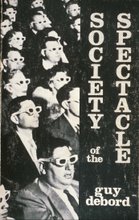link revista interthesis http://www.interthesis.cfh.ufsc.br/interthesis5/artigos/Traducao_Selvino_AGAMBEN_interthesis5.pdf
MOVIMENTO1¨
GIORGIO AGAMBEN
As reflexões que farei hoje nascem de um mal-estar, ou melhor, de uma série de
perguntas que me pus, assistindo, há algum tempo atrás, em Veneza, a um encontro em
que estavam presentes algumas pessoas que também estão aqui hoje (Toni, Casarini...).
Um termo era repetidamente usado pelos que falavam e discutiam: era o termo
“movimento”. Trata-se de um termo que, em nossa tradição, tem uma longa história.
Mesmo hoje, na intervenção de Toni (Negri), o termo movimento parece ter sido o mais
recorrente. Também no seu livro tem uma posição estratégica, toda vez que se trata de
definir o termo multidão, por exemplo, para escapar da falsa alternativa entre soberania
e anarquia. De onde vinha meu mal-estar, que se repete também hoje? Do fato de me dar
conta, pela primeira vez, de que este termo nunca era definido. Quem o usava
provavelmente não o poderia definir, ou em todo caso, nunca o definia. Eu mesmo não o
teria conseguido definir. No passado muitas vezes me servi, como regra implícita de
minha prática de pensamento, da fórmula: quando há movimento, fazer como se não
houvesse, e quando não há movimento, fazer como se houvesse. Agora me dou conta de
que não sabia o que significava o termo movimento, para além de toda a sua
genericidade. Trata-se de um termo que todos acham que entendem, mas que não se
define. Por exemplo: de onde provinha este termo? Por que se passa em certo momento
a chamar movimento uma instância política decisiva? Assim, as considerações que faço
1 Tradução portuguesa por Selvino José Assmann, Doutor em Filosofia pela Università Lateranense, PUL,
Itália, Professor do Departamento de Filosofia e do Doutorado Interdisciplinar em Ciências Humanas,
CFH/UFSC, Setembro de 2005.
¨ Tradução portuguesa da intervenção feita por Giorgio AGAMBEN, em italiano, em encontro realizado em
Veneza. Audio acessado em junho de 2005: http://www.globalproject.info/IMG/mp3/03_agamben.mp3.
Conservou-se em geral, na tradução portuguesa, o estilo da intervenção falada, embora se tenha cotejado
o áudio em italiano com a transcrição feita e traduzida para o inglês – por Arianna Bove - acessada, em
agosto de 2005, na revista eletrônica Multitudes: http://multitudes.samidzat.net/article.php3?id_article=1914
2
hoje nascem da consciência de que não era possível deixar indefinido esse termo, esse
conceito. Devemos pensar o movimento porque o conceito é de algum modo o nosso
impensado, que, por isso mesmo, corre o risco de comprometer eventualmente nossas
escolhas e nossas estratégias. Não é apenas um escrúpulo filológico, ou porque a
terminologia é o momento poético e, portanto, produtivo do pensamento, ou porque o meu
trabalho consiste em definir conceitos, o que por hábito costumo fazer, mas porque o uso
a-crítico de certos conceitos pode ser responsável de muitas derrotas. Lembro que estou
apenas no início de uma pesquisa sobre este conceito, e por isso hoje quero apenas
plantar algumas balizas, que poderiam servir para endereçar a investigação futura.
Em primeiro lugar, alguns dados históricos banais: o conceito de movimento, que
nas ciências e na filosofia tem uma longa história, por sua vez adquire na política um
significado técnico relevante apenas no século XIX.. Um dos primeiros aparecimentos
ocorre na Revolução de julho de 1830 na França, na qual os defensores de mudança se
denominavam do “partie du mouvement” e os seus adversários do “partie de l’ordre”. De
modo breve, talvez só com Lorenz von Stein, autor que, como se sabe, influenciou tanto
Marx quanto Carl Schmitt, que este conceito se torna mais preciso e começa a definir um
âmbito estratégico de aplicação. Na sua História do Movimento Social na França (1850),
Von Stein joga a noção de movimento em contraposição dialética à noção de Estado. O
Estado é o elemento estático, legal, enquanto o movimento é a expressão das forças
dinâmicas da sociedade. Dessa forma, o movimento é sempre movimento social, em
antagonismo com o Estado, e expressa o primado dinâmico da sociedade sobre as
instituições jurídicas e estatais. Assim, nem sequer Von Stein define o que entende por
movimento; ele atribui a ele uma dinâmica e descreve sua função, mas não lhe dá uma
definição nem uma tópica.
Algumas indicações interessantes sobre a história dos movimentos podem ser
encontradas no livro de Arendt sobre o totalitarismo. Mas também nele o termo acaba não
sendo definido. Ou seja, todos sabem o que é, mas ninguém o define. O que Arendt
mostra é que por volta da Primeira Guerra Mundial, imediatamente antes e imediatamente
depois, os movimentos adquirem na Europa um desenvolvimento extraordinário, mas
agora em contraposição aos partidos. Por volta da primeira Guerra Mundial, os
3
movimentos estendem sua influência em contraposição estratégica contra os partidos.
Assiste-se então a uma verdadeira explosão do conceito e do fenômeno do movimento.
Tal terminologia é usada tanto pela direita quanto pela esquerda: Fascismo e Nazismo
sempre se definem como movimentos, e só secundariamente como partidos.
De toda forma, trata-se de um termo que neste momento ultrapassa o âmbito
político. Muitas pessoas conhecem a importância que, nesse momento, têm na própria
formação o Jugendbewegung (movimento de juventude). Para dar um exemplo de fora da
política: quando Freud, em 1914, pretende escrever um texto para definir o que é isso, a
psicanálise, ele não a define nem como escola, nem como instituição, e nem como
disciplina, mas como “movimento psicanalítico”. Mas também aqui não aparece uma
definição. De toda forma, se percebe claramente que há em determinados momentos
históricos palavras e conceitos que se impõem como palavras de ordem irresistíveis, que
são adotadas por posições antagônicas, sem que, porém, nunca se exija uma definição.
O ponto perturbador desta minha pesquisa, o ponto em que se evidencia a cegueira deste
conceito, é me ter dado conta que o único que havia tentado definir no âmbito político e
também jurídico este termo foi um jurista nazista: Carl Schmitt. No ensaio de 1933,
intitulado “Staat, Bewegung, Volk” (Estado, Movimento, Povo), e cujo subtítulo é Die
Dreigliederung der politischen Einheit (A tripartição da unidade política), Schmitt procura
definir claramente a função político-constitucional da noção de movimento. O que é
perturbador é o fato de Schmitt querer definir nesse ensaio a estrutura constitucional do
Reich nazista. Trata-se de definir o que ele denomina “heutige Verfassunglage”, ou seja, a
situação constitucional do Estado nacional-socialista. Eis um breve resumo das teses de
Schmitt. Parece-me que esta promiscuidade terminológica com um pensador do nazismo
exige clareza e lucidez. Portanto, sem uma análise dessa promiscuidade, no caso da
análise como a de Schmitt, não é possível esclarecer e sair dessa promiscuidade.
Segundo Schmitt, a política do Reich nazista se funda sobre três elementos ou
membros: Estado, movimento e povo. Por conseguinte, a articulação constitucional do
Reich nazista é resultado da articulação e da distinção desses três elementos. O primeiro
elemento é o Estado - declara Schmitt – e importa prestar atenção na definição que ele
dá: o Estado é a parte política estática. Trata-se do aparato das repartições. O povo –
4
preste-se também atenção – é o elemento impolítico, não político, (unpolistisch), que
cresce à sombra e sob a proteção do movimento. O movimento, por sua vez, é o
verdadeiro elemento político, elemento político dinâmico, que encontra a sua forma
específica na relação com o Partido Nacional-Socialista, com a direção (Führung).
Importante é que para Schmitt o próprio Führer não é senão a personificação do
movimento. Gostaria ainda de falar sobre as implicações dessa tripartição, que, segundo
Schmitt, também está presente no aparato constitucional do Estado soviético.
Uma primeira consideração importante, rica de conseqüências, é a seguinte: o
primado da noção de movimento é função do fato de o povo se tornar impolítico
(insistimos que o povo é o elemento impolítico que cresce à sombra e sob a proteção do
movimento...). Portanto, eis a primeira conseqüência importante: o movimento torna-se o
conceito político decisivo quando o conceito democrático de povo, como corpo político, já
está ultrapassado. Isso talvez hoje não nos deixe surpresos, mas se pode dizer que a
democracia acaba quando nascem os movimentos. Em sentido substancial, não existem
movimentos democráticos (entendendo aqui por democracia aquela tradição que vê no
povo o seu elemento político constitutivo – se de fato a democracia possa ou não
repousar sobre o conceito de povo, isso é outro problema...). Esse pressuposto – o de
que os movimentos estabelecem o fim do conceito de povo como corpo político – parece
ser compartilhado tanto pela tradição revolucionária da esquerda, quanto pelo fascismo e
pelo nazismo. Não é por acaso que pensadores políticos contemporâneos, como Toni
(Negri), procuram pensar o novo corpo político recorrendo a outras noções, como
multidão, e não à de povo. Em Hobbes, a noção de multidão também aparece contraposta
à noção de povo. Para mim também é significativo que em volta de Jesus não há nunca
laos nem demos (termos técnicos no grego para “povo”), mas apenas oclos (uma massa,
uma “turba”, conforme a tradução de São Jerônimo, uma multidão). Em volta de Jesus
nunca há povo, mas somente multidão. Portanto, o conceito de movimento pressupõe o
eclipse do conceito democrático de povo como sujeito político constitutivo, como corpo
político. Esta é a primeira conseqüência do uso do termo movimento. E nisso concordam
nazismo e fascismo: estes nascem da consciência de que o conceito de povo como corpo
político está ultrapassado.
5
A segunda conseqüência desse conceito schmittiano de movimento é a de que o
povo é um elemento impolítico cujo crescimento o movimento precisa proteger e sustentar
(Schmitt usa o termo “wachsen”, que tem a ver com crescimento biológico, de plantas e
animais). Conforme declara Schmitt, isso corresponde não à esfera não política do povo,
mas à esfera impolítica da administração (Selbstverwaltung). Schmitt lembra também o
estado corporativo fascista. Olhando as coisas com os olhos de hoje, parece que não se
pode deixar de ver - nessa determinação do povo como elemento não-político - o implícito
reconhecimento, que Schmitt nunca ousa articular, do seu caráter biopolítico. O povo,
deixa de ser corpo político constitutivo, e se transformou em população, ou seja, em
entidade demográfico-biológica, e, como tal, impolítica. Uma entidade que o movimento
deve sustentar, proteger e fazer crescer. Quando, durante o século XIX, o povo se
transforma de entidade política em entidade demográfica e biológica, em populações, o
movimento se torna uma necessidade. Disso também devemos ter consciência: vivemos
em uma época na qual a transformação do povo em população, de uma entidade política
em entidade demográfica, é um fato cabal. O povo hoje é uma realidade biopolítica, no
sentido de Foucault, no sentido restrito do termo, e é essa transformação biopolítica do
antigo sujeito político, que torna necessário o conceito de movimento. Se, porventura,
quisermos pensar de forma diferente o conceito de biopolítica, como o faz Toni (Negri),
mesmo que em perspectiva diferente, e da qual eu me sinto muito próximo, se quisermos,
pois, pensar a intrínseca politicidade do biopolítico – se o elemento biopolítico é visto
como político desde sempre , e por isso não precisa ser politizado através do movimento
¾ então precisaremos repensar, desde a raiz, o conceito de movimento. Não poderemos
usar a-criticamente o conceito de movimento se, por exemplo, quisermos pensar a
politicidade do elemento biopolítico.
Tal trabalho de definição torna-se necessário também porque, continuando a ler o
texto de Schmitt, verificamos como aparecem, a partir do conceito de movimento, aporias
especialmente ameaçadoras. Se, na perspectiva de Schmitt, o elemento político
determinante, se o elemento político autônomo é o movimento, e se o povo, por sua vez,
é um elemento impolítico, então o movimento só poderá encontrar sua politicidade na
medida em que sinalizar no corpo biopolítico do povo para cesuras internas que permitam
a sua politicização. Essa cesura é denominada por Schmitt de identidade de espécie, ou
seja, racismo. Podemos verificar que aqui Schmitt alcança a máxima identificação com o
6
racismo e a máxima co-responsabilidade com o nazismo. Isso é um fato e, ao mesmo
tempo nos devemos dar conta de que essa escolha, a de ser obrigado a identificar uma
cesura, no corpo impolítico do povo, é a conseqüência imediata da sua concepção da
função do movimento. Se o elemento político não for o povo, mas o movimento como
entidade autônoma, de onde o movimento pode tirar sua politicidade? A politicidade do
movimento poderá basear-se unicamente na sua capacidade de identificar no interior do
povo um inimigo, ou seja, um elemento racialmente estranho – no caso de Schmitt. Onde
há movimento sempre haverá uma cesura que corta o povo, que divide o povo, nesse
caso identificando um inimigo. Eis porque me parece tão urgente repensar o conceito de
movimento, e esclarecer a sua relação com o de povo e de multidão. Em Schmitt vemos
que o elemento excluído do movimento como impolítico volta a apresentar-se como
aquilo que precisa, cada vez, ser decidido; trata-se de um decisão política sobre o
impolítico, sobre o que é impolítico no político. Em Schmitt, o movimento é um órgão que
decide sobre o impolítico. É uma decisão política sobre o impolítico. Isso pode ter a forma
de uma cesura étnica ou racial, mas também, como acontece hoje, a forma de indicar
uma tarefa de gestão e de governo daquele elemento impolítico que são as populações, o
corpo biológico da humanidade, dos povos, que o poder hoje deve governar.
Há algumas perguntas que hoje se põem para nós.
Em primeiro lugar: devemos continuar usando o conceito de movimento, ou
devemos abandoná-lo? Se, por exemplo, o conceito de movimento sinaliza para uma
espécie de politização do impolítico, poderia acontecer um movimento que fosse
diferente, por exemplo, de uma guerra civil?
Ou então, outra pergunta: em que direção poderíamos repensar o conceito de
movimento e sua relação com o biopolítico?
Com esta pergunta gostaria de terminar. Não darei aqui uma resposta, para uma
pesquisa que tomará muito tempo, mas gostaria apenas de dar algumas indicações de
horizonte, para onde nos podemos movimentar ou onde podemos pesquisar.
7
Sabemos que o conceito de movimento é o conceito central no pensamento de
Aristóteles. No interior do seu pensamento, o conceito de movimento, kinesis, cumpre
uma função estratégica num âmbito muito importante, como o da relação entre potência e
ato. Aristóteles apresenta uma definição muito interessante: movimento é o ato de uma
potência enquanto potência, mais do que uma passagem para o ato. Noutro lugar ele
afirma que o movimento é um ato imperfeito, ateles, que não se possui no seu fim, que
não tem fim. Neste caso, sugeriria uma pequena modificação em Aristóteles, que vai
numa direção - entre as muitas diferenças que nos opõem - que Toni poderia compartilhar
comigo: o movimento é a constituição de uma potência enquanto potência. Mas se isso
for verdade, então nunca conseguiremos pensar que o movimento seja externo ou
autônomo em relação à multidão, ao povo. Assim, o movimento nunca poderá ser sujeito
de uma decisão, organização, direção do povo, ou nunca poderá ser elemento de
politicização da multidão ou do povo.
Outra coisa que me parece interessante em Aristóteles é que o movimento é um
ato ao qual falta um fim, ateles, incompleto, in-finito, no sentido de lhe faltar um telos. Isso
significa que o movimento se mantém numa relação essencial com uma privação, com
uma ausência de telos, com uma imperfeição. Movimento é sempre, constitutivamente,
relação com o próprio faltar, com a própria ausência de um ergon, de um telos e também
de uma obra. Aquilo sobre o que nunca estou de acordo com Toni é a ênfase posta na
produtividade. Há que reivindicar também a inoperosidade, a ausência de obra como
elemento central... Por conseguinte, o movimento é algo que nunca se possui em um
ergon, em um telos, em uma obra. Movimento expressa nesta perspectiva a
impossibilidade de um telos, de um ergon, ou de um fim de uma obra para a política.
Movimento significa precisamente o fato de ser indefinida (indefinitezza) e a imperfeição
de toda política. Nesse sentido, o movimento deixa sempre um resíduo.
Sob esta perspectiva, o mote que havia citado inicialmente, e que servia de regra
interna para o meu pensamento - quando há movimento, fazer como se não houvesse; e
quando não há movimento, fazer como se houvesse – poderia ser reformulado, em
sentido ontológico, da seguinte maneira: o movimento é aquilo que, se existe, é como se
não existisse, ele falta a si mesmo (manca a se stesso), e quando não existe, é como se
8
existisse, excede a si mesmo (eccede a se stesso). Há, pois, um umbral de
indeterminação entre o excesso e a falta que marca o limite e o resíduo de qualquer
política na sua constitutiva imperfeição.
Florianópolis, Setembro de 2005.
Selvino José Assmann – Tradutor
Maslow, Sheldrake e a Experiência de pico
-
Por: Colin Wilson
Colin Wilson
Outro dia, no pub local, um estranho me perguntou quantos livros eu tinha
escrito. Quando respondi 55, ele parece...
Há 8 anos







































